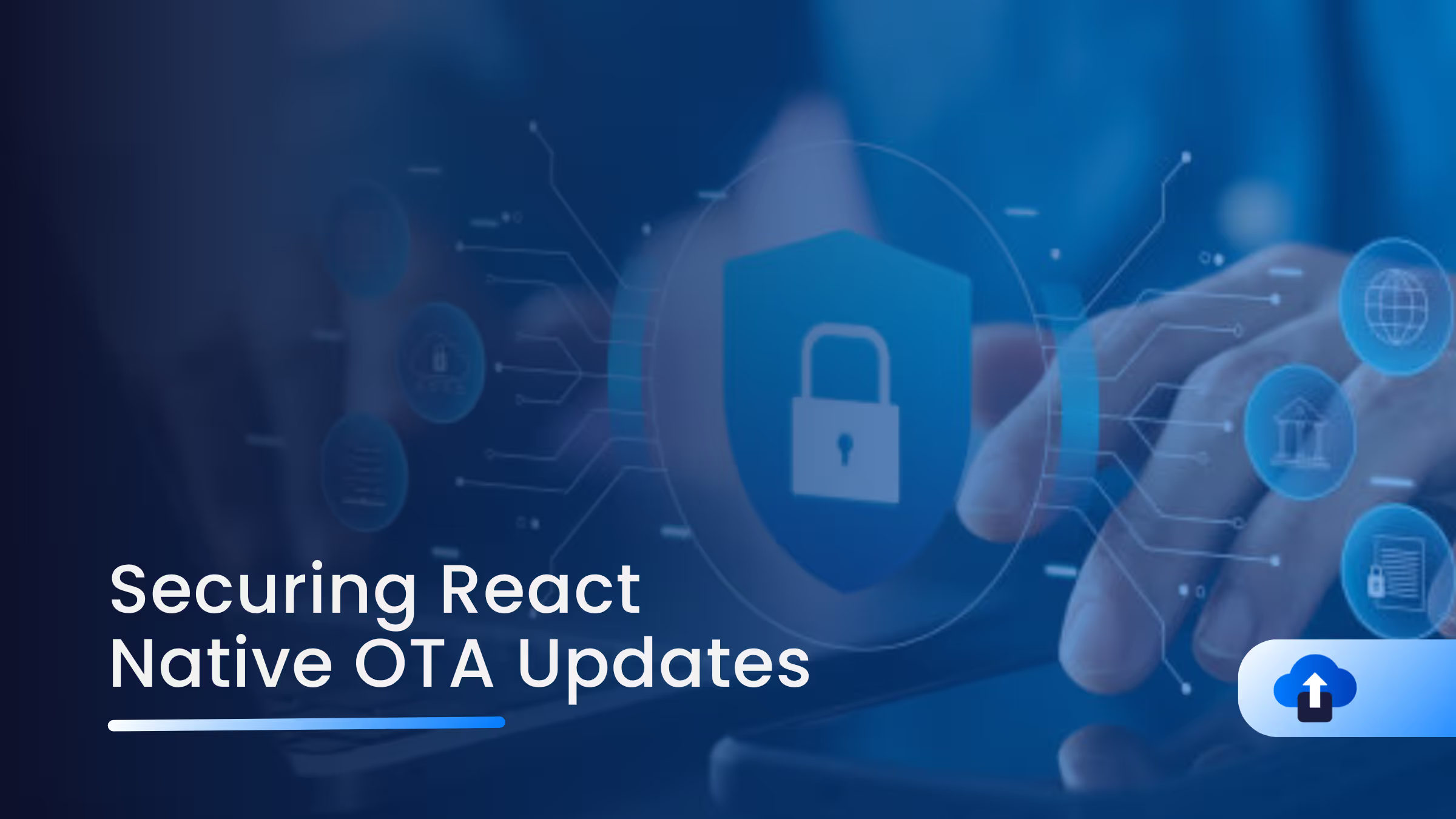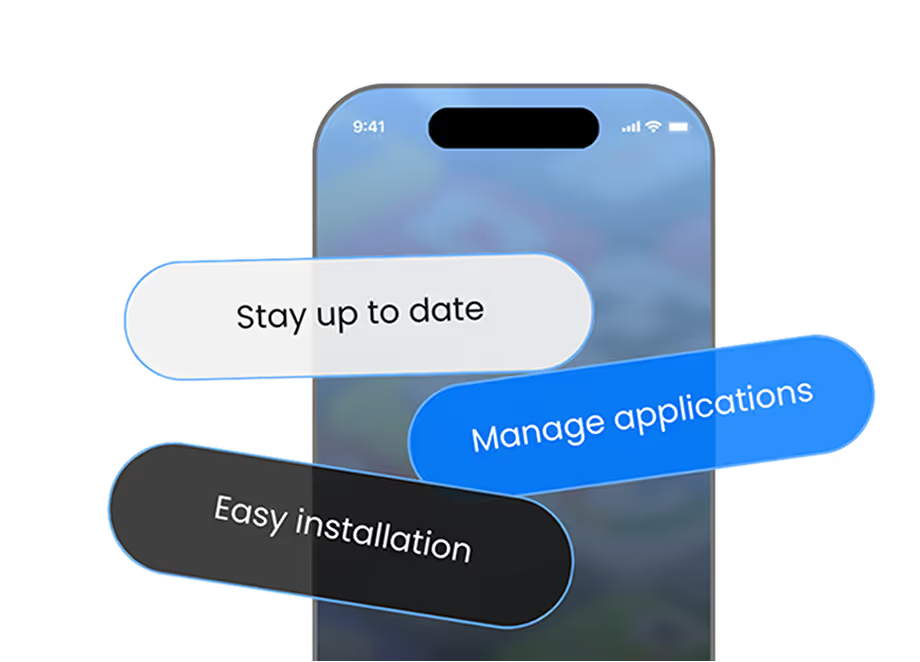
Over-The-Air (OTA) updates have revolutionized mobile development by allowing mobile app developers (here React Native) to push updates directly to users without waiting for app store approvals.
This capability significantly accelerates the delivery of bug fixes, feature improvements, and experiments.
However, this agility comes with security trade-offs. If not implemented securely, OTA updates can become a vulnerability vector, putting users and businesses at risk.
In this guide, we’ll explore the major security challenges of OTA updates in React Native and provide best practices to mitigate those risks while maintaining rapid delivery.
Understanding the Security Risks of OTA Updates
Man-in-the-Middle (MitM) Attacks
In OTA updates, JavaScript bundles are typically downloaded over the network. Without proper transport security, attackers can intercept and modify these bundles during transmission.
A classic MitM attack on an unencrypted or poorly configured connection can result in users unknowingly installing compromised code.
Unauthorized Code Injection
When OTA platforms fail to enforce strong validation mechanisms, attackers can inject malicious JavaScript code into the update pipeline.
This can hijack user sessions, steal data, or alter the app’s behavior, all without triggering a new app store release.
Data Exposure via Misconfigured Storage
Storing update bundles in publicly accessible or poorly configured cloud storage buckets can expose sensitive data or entire update files to unauthorized parties.
Misconfigured access permissions often go unnoticed until an incident occurs.
Key & Credential Compromise
Suppose the signing keys or OTA platform credentials are exposed. In that case, whether through version control leaks, social engineering, or insecure storage, attackers can sign and distribute their own updates that appear legitimate to the app.
Mitigation Strategies & Best Practices
1. Digitally Sign All Update Bundles
Digital signatures provide a strong line of defense by verifying the integrity and authenticity of an update before it’s applied. Here’s how to implement it:
- Use a private key to sign your OTA JavaScript bundle.
- Ensure your app contains the corresponding public key.
- At runtime, verify the signature before executing the bundle.
This guarantees that only bundles signed by your team will be trusted by the app.
If you’re using platforms like Revopush or Microsoft CodePush, check their documentation on implementing custom signing and verification logic.
2. Enforce HTTPS with TLS + SSL Pinning
HTTPS with modern TLS ensures that all data transmitted is encrypted. However, it can still be vulnerable to certificate spoofing.
SSL Pinning mitigates this risk by embedding a known certificate in the app and rejecting connections not matching it.
React Native tools like react-native-ssl-public-key-pinning allow you to implement SSL pinning without writing native code. Make sure to:
- Pin only trusted certs.
- Rotate certs before expiration.
- At runtime, verify the signature before executing the bundle.
3. Secure Secret Management
Keys, credentials, and tokens must never be hardcoded or stored insecurely. Use:
- ios: Keychain
- Android: Keystore
- React Native: Libraries like react-native-keychain or react-native-sensitive-info
Secrets should also be rotated periodically and access logs monitored for anomalies.
4. Code Obfuscation and Hermes Support
React Native bundles can be reverse-engineered if not protected. Hermes, the JavaScript engine optimized for React Native, compiles JS into bytecode, adding an inherent layer of protection.
For extra protection:
- Use Metro plugins to obfuscate code.
- Strip debug logs.
- Minify and mangle variable names during the build process.
Building a Secure OTA Release Pipeline
1. Harden Your CI/CD Infrastructure
Your CI/CD pipeline is the backbone of your OTA deployment process. Secure it by:
- Enforcing access controls based on roles.
- Using isolated build environments.
- Scanning builds for malware or unexpected code.
- Encrypting environment secrets.
2. Set Up Real-Time Alerts and Incident Response Plans
Have alerting systems in place that notify your team about abnormal update patterns or verification failures. Be prepared to:
- Revoke updates
- Monitor for errors or suspicious behavior.
- Expand rollout gradually.
Platforms like Microsoft CodePush or Expo’s EAS Update support this strategy natively.
3. Comprehensive Testing Before Publishing
Before publishing any OTA bundle:
- Run unit and integration tests.
- Conduct static code analysis using tools like SonarQube.
- Perform security-focused QA.
This ensures your update is both functional and secure.
Monitor, Audit, and Respond
1. Implement OTA Update Logging & Monitoring
Track key update metrics:
- Timestamp of update fetch
- Bundle hash
- Device metadata
Logging these helps with auditing and post-mortem analysis in case of issues.
2. Set Up Real-Time Alerts and Incident Response Plans
Have alerting systems in place that notify your team about abnormal update patterns or verification failures. Be prepared to:
- Revoke updates
- Disable OTA
- Push emergency patches
Governance, Access Control & Compliance
1. Use Multi-Factor Authentication (MFA) Across Teams
All systems related to OTA, CI servers, source control, and OTA platforms must enforce MFA. This reduces the chance of compromised accounts being used to inject bad code.
2. Regularly Audit Permissions
Review access permissions every quarter:
- Remove inactive users
- Use the principle of least privilege
- Automate audits using infrastructure-as-code where possible
3. Document & Automate Security Policies
Define a clear OTA update policy. This should include:
- Signing procedures
- Review and approval process
- Emergency rollback procedures
Automate the enforcement of these policies in your CI/CD pipeline.
Advanced Techniques for Securing OTA in Production
1. Bundle Integrity Verification
Use hash-based integrity checks (e.g., SHA-256) to ensure that downloaded bundles match expected versions. Store and validate hash values during runtime to detect tampering.
2. Time-Limited Update Validity
Sign updates with a timestamp or expiration logic to prevent replay attacks. This ensures old updates can't be re-applied maliciously.
3. Device-Specific Authorization
Pair updates with unique device tokens or IDs, allowing updates only on verified installations. This minimizes risks from repackaging or cloning the app.
Developer Education and Organizational Culture
- Train teams regularly on secure OTA workflows.
- Use the principle of least privilege
- Automate audits using infrastructure-as-code where possible
1. Document & Automate Security Policies
Define a clear OTA update policy. This should include:
- Signing procedures
- Review and approval process
- Emergency rollback procedures
Automate the enforcement of these policies in your CI/CD pipeline.
Final Thoughts
OTA updates are a powerful tool in a React Native developer’s arsenal, but power comes with responsibility.
By implementing digital signing, secure transport, secret management, and rigorous governance, you can ensure that your OTA pipeline is resilient against attacks and trustworthy for your users.
Security isn’t a one-time task; it’s a continuous commitment. As threats evolve, so should your practices. Stay informed, stay proactive, and keep your React Native apps secure.












